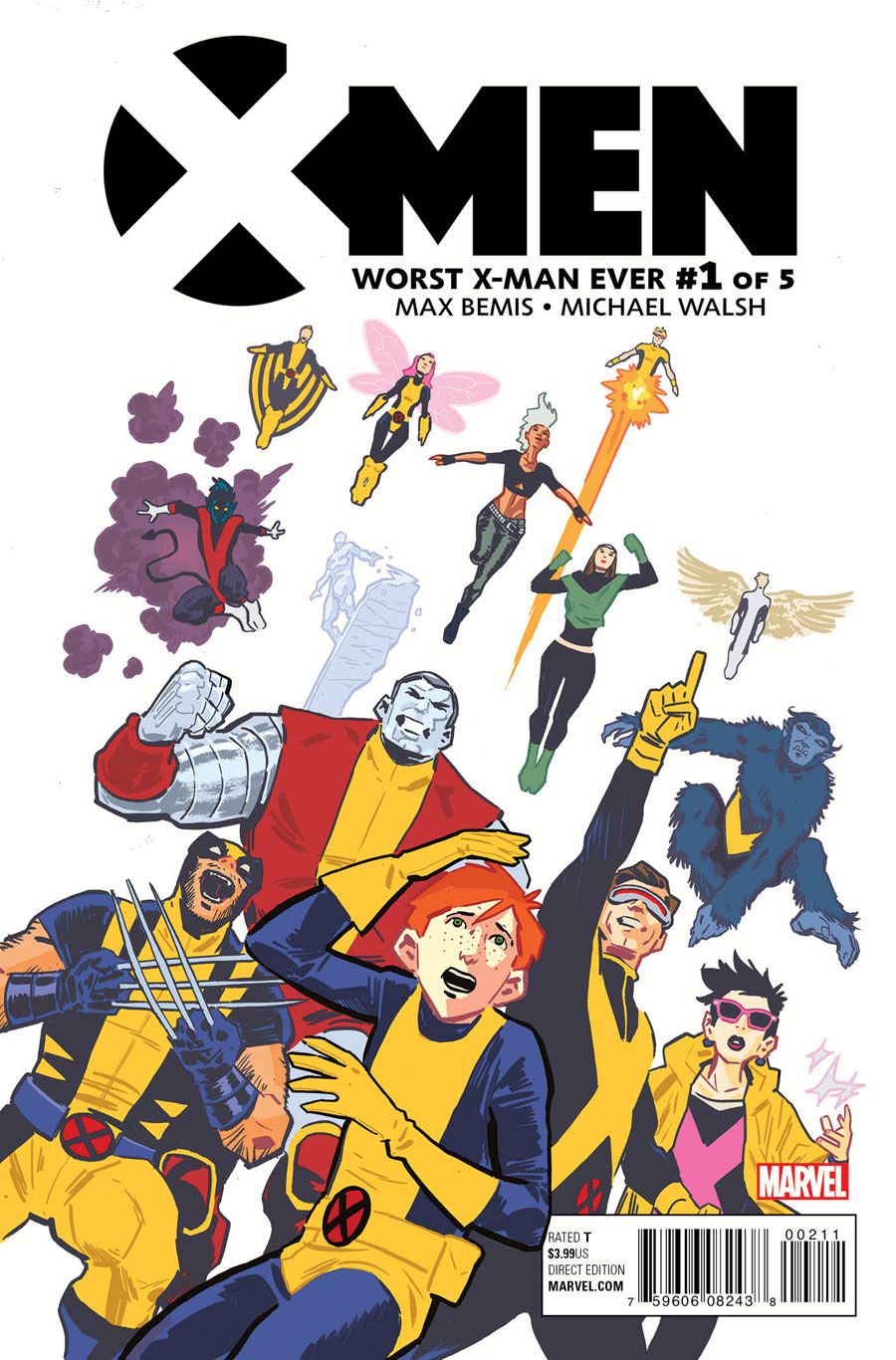Even in the modern era, where diversity is more widely embraced than shunned, the poor and decidedly-average high schooler Bailey Hoskins can't catch a break, even after he learns he's the son of mutant parents. In Max Bemis and Michael Walsh's "X-Men: Worst X-Man Ever" #1, Bailey looks for some way -- any way -- to stand out from the crowd and therefore be noticed by his peers, but his deliberate attempts to explore new interests just don't click; his discovery of his potential inheritance of the mutant gene changes everything, as he realizes that maybe the unique characteristic he seeks might have been handed to him in his DNA. Bemis' chronicle of Bailey's emotional swings hits home with anyone who's ever been an outcast and who continues feel like an outsider even after finding what they think will make them happy, effectively capturing the turmoil of being a teen through Bailey's powers, which come with an agonizingly unique caveat.
Bemis plays up the whole notion of seeking popularity, only to find that -- upon attaining it -- the circumstances are not only similar, but worse in many ways. His story runs the gamut of teen emotion, from the angst and disappointment of feeling isolated to the tentative joy inspired by the hopes of betterment, only to have those dashed. The reversals in Bemis' story show these extremes in a different light; with Bailey's momentary fantasies of being the next Wolverine or Cyclops crushed, he finds comfort in at least knowing his parents are special, something that's not always evident in most stories featuring teens trying to find themselves. However, even this gives Bemis' story a briefly heart-wrenching quality.
Walsh truly captures the tragedy of one surprising and heartbreaking scene as well as the poignancy of its aftermath. The literal foreshadowing of this life-changing moment is cleverly understated until the brutal moment occurs, and the events immediately afterward establish a bond between Bailey and Hank McCoy that -- up to this point -- had been appropriately distant and clinical. The scene also gives Walsh a chance to remind readers this is an X-Men story, as he and Bemis opt for an approximation of the classic 1980s incarnation of the team to give the story a comforting sense of familiarity that blends well with the feelings Bailey's situation evokes in readers.
Walsh's overall style also evokes a sense of innocence and nostalgia; Bailey is drawn with an Archie-like purity, but it's amidst today's fashions and technologies. His introduction is told through his interaction with his smartphone and a social media app, and Bailey's best friend is clearly not inspired from an old "Archie" comic. Walsh is more adept at creating an everyday world than superhero battles on the front lawn of the Xavier School, but he nonetheless lays out a convincing action sequence, even if it is largely background for a pivotal moment in Bailey's life. Colorist Ruth Redmond plays into the everyday style of Walsh's art, punctuating the action scenes with a dark and almost symbolic red background, indicating perhaps bloodshed or a red-letter moment.
"X-Men: Worst X-Man Ever" #1 has yet to show if young Bailey will eventually fulfill that eponymous role, but -- in the meantime -- the title is one of the better, if more offbeat, X-Men stories amongst the latest relaunches. The character-first, powers-second nature of Bemis' story gives the miniseries a very human quality, even if all of the main players are mutants.

